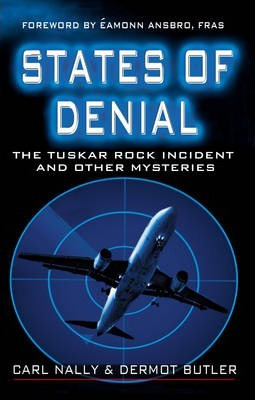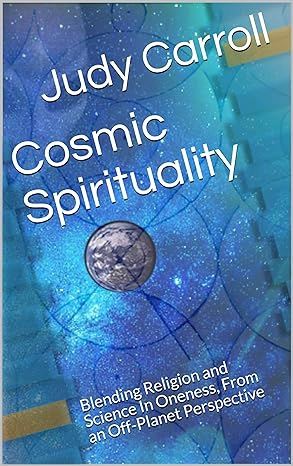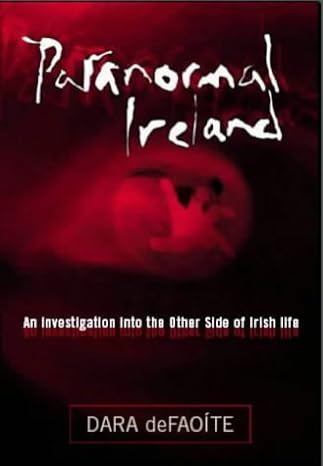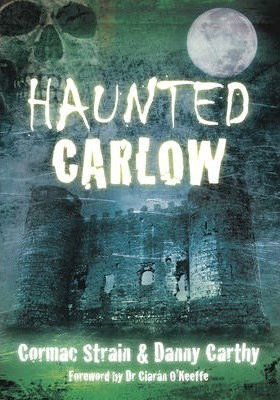GhostÉire’s Phantasm Collective - Youghal Clock Gate Tower - Episode One Review
Online Paranormal Shows
Yesterday
6 minute read.
GhostÉire Paranormal, established in 2009, identifies itself as a team committed to investigating paranormal phenomena using rational thinking. Their new series, Phantasm Collective, begins with episode one focusing on a visit to the historic Clock Gate Tower in Youghal, County Cork, Ireland.
The episode opens with Jessica interviewing Wayne Ruxton, a tour guide at the Clock Gate Tower. Wayne offers verified historical insights, the east side of Youghal historically housed fishermen and sailors, the north side around Main Street was home to wealthier Protestants, and the south side was primarily inhabited by poorer Irish citizens. It is noted that the Clock Gate Tower does not feature a clock face on its western side, reflecting early assumptions that no one would live to the west due to the area's hilly terrain.
Production values throughout the episode are inconsistent. Variations in video quality and fluctuating audio levels between shots are apparent. Cut scenes and fades are frequent, a necessary part of condensing extended recordings into shorter formats. While the inclusion of an on-screen timer is helpful, the absence of a constant visible clock diminishes viewers' ability to track the progression of time accurately.
GhostÉire are joined by Karen, Emma, Serena, and Lisa from Paragirls Ireland to carry out several investigative methods. Anthony conducts baseline environmental measurements using a Tri-Field Meter, recording a radio frequency of 20 kilopascals per square metre. He notes that environmental variables such as these can affect human perception, a responsible acknowledgment during such investigations.
The Paragirls team employs several techniques, including the Estes Method. This method involves sensory deprivation through the use of headphones and blindfolds, allowing a participant to focus solely on auditory input while another team member asks questions aloud. The show correctly explains the Estes Method. However, during the session, discussions occurred about the ongoing results, which compromises the methodological integrity. Furthermore, no details are given regarding the quality of the headphones, an important factor in ensuring full sensory deprivation. Best practice would involve only asking clear, predefined questions during the session without any mid-session discussion.
Divination through the use of dowsing rods is also demonstrated. Both Estes Method and dowsing rods are a very personal experience and there was no mention to this, for example that scientific studies, such as the Munich Experiments (1987–1988) and the Australian Skeptics Water Dowsing Test (2001), found no reliable evidence supporting the effectiveness of dowsing rods. The scientific consensus attributes the observed movements to the ideomotor effect, subconscious muscular movements made without conscious effort.
Electronic Voice Phenomena (EVP) recordings are attempted in the Gaol Room on the second floor. However, the specific make and model of the recording equipment are not disclosed, and it is stated that the recordings will be played back in slow motion. Slowing down audio without appropriate technical adjustments can lead to time-stretching and pitch distortion, introducing a risk of cognitive bias. These considerations are not discussed, raising questions about the interpretation of the recordings. Playback during the review session reveals that the captured audio could easily be dismissed as background noise, as no clear voices were discernible while we watched the show.
The following day, Jessica and Anthony, joined by GhostÉire members Jennifer Kerrigan, Cameron Murphy, and Derek Whelan, review the session findings. They attempt to match words heard during the Estes Method session to historical information about the Clock Gate Tower. While potentially insightful, this approach risks confirmation bias. As a more rigorous method, words should be considered independently and discarded if they do not match clearly without force-fitting them into existing historical narratives whether local or further a field.
A notable editorial shift occurs when the episode transitions abruptly into hypnosis without clear explanation. Sam Lawrence is introduced as a hypnotist. Retro-cognition, the alleged psychic ability to access past events, is mentioned, along with a query about whether brainwaves could be influenced through such experiences. No scientific data is presented to support or refute these ideas.
On the second night, Anthony and Jessica conduct an experiment using a ouija'esk board, asking spirits to point to the forms of torture possibly suffered at the site or that ended a spirits life.
The next scene shows a permission board being used with different members of Paragirls and GhostÉire.
During both these scenes, the planchette moves on each occasion, on one of the permission board questions a close-up shot shows Derek's finger continuing to move slightly after the planchette stops, suggesting, whether intentional or not, a clear pushing force. Blink and you'll miss it but if you slow it down you'll see it, this suggests, intentional or not, clear pushing force, even though it might be so small, it's clearly visible. The permission board (akin to a Ouija board), and the fact that the planchette moved in response to every question raises concerns about potential unconscious influence, though editing could also account for this impression.
Later, in the Family Room on the fourth floor, Sam Lawrence conducts a retro-cognition experiment on Lisa from Paragirls Ireland. Lisa was reportedly deemed susceptible to hypnosis during an off-camera pre-test, although details of this evaluation are not provided. During the experiment, an EEG device records her brain activity while she is subjected to six questions and the reading of twenty-five names.
The results, reviewed the next day, show that Lisa failed to respond within the defined target to the five names verifiably associated with the Clock Gate Tower. However, responses were recorded to two names with no known connection to the site. Attempts were made to contextualise these names, but this risks the same problems of confirmation bias mentioned earlier. Anthony appropriately cautions viewers, stating that you have to be careful not to try and associate the name Henry with anyone at the location as it was a common name at that time period.
In conclusion, Phantasm Collective Episode one offers an interesting but cautious blend of historical information and paranormal investigation. The show's strength lies in its attention to history and willingness to acknowledge the subjective nature of some of its methods. However, gaps in methodological rigour, production inconsistencies, and the potential for cognitive biases limit the conclusiveness of its findings. With stricter adherence to scientific methods, greater technical transparency, and improved editorial continuity, future episodes could significantly enhance the shows credibility while retaining the passion that GhostÉire brings to the field.
One notable aspect of the episode is Jessica’s performance on screen. She displays a commanding presence throughout, managing to hold the viewer’s attention with ease. Her manner is confident yet approachable, and she communicates with both the audience and the people she interviews in a way that feels genuine and natural. Unlike some presenters who may appear scripted or overly rehearsed, Jessica’s style feels relaxed and authentic, which helps to maintain the flow of the programme and gives the investigation a more credible and engaging tone.
We look forward to getting a chance to sit down and watch episode two in the next couple of weeks.
The episode opens with Jessica interviewing Wayne Ruxton, a tour guide at the Clock Gate Tower. Wayne offers verified historical insights, the east side of Youghal historically housed fishermen and sailors, the north side around Main Street was home to wealthier Protestants, and the south side was primarily inhabited by poorer Irish citizens. It is noted that the Clock Gate Tower does not feature a clock face on its western side, reflecting early assumptions that no one would live to the west due to the area's hilly terrain.
Production values throughout the episode are inconsistent. Variations in video quality and fluctuating audio levels between shots are apparent. Cut scenes and fades are frequent, a necessary part of condensing extended recordings into shorter formats. While the inclusion of an on-screen timer is helpful, the absence of a constant visible clock diminishes viewers' ability to track the progression of time accurately.
GhostÉire are joined by Karen, Emma, Serena, and Lisa from Paragirls Ireland to carry out several investigative methods. Anthony conducts baseline environmental measurements using a Tri-Field Meter, recording a radio frequency of 20 kilopascals per square metre. He notes that environmental variables such as these can affect human perception, a responsible acknowledgment during such investigations.
The Paragirls team employs several techniques, including the Estes Method. This method involves sensory deprivation through the use of headphones and blindfolds, allowing a participant to focus solely on auditory input while another team member asks questions aloud. The show correctly explains the Estes Method. However, during the session, discussions occurred about the ongoing results, which compromises the methodological integrity. Furthermore, no details are given regarding the quality of the headphones, an important factor in ensuring full sensory deprivation. Best practice would involve only asking clear, predefined questions during the session without any mid-session discussion.
Divination through the use of dowsing rods is also demonstrated. Both Estes Method and dowsing rods are a very personal experience and there was no mention to this, for example that scientific studies, such as the Munich Experiments (1987–1988) and the Australian Skeptics Water Dowsing Test (2001), found no reliable evidence supporting the effectiveness of dowsing rods. The scientific consensus attributes the observed movements to the ideomotor effect, subconscious muscular movements made without conscious effort.
Electronic Voice Phenomena (EVP) recordings are attempted in the Gaol Room on the second floor. However, the specific make and model of the recording equipment are not disclosed, and it is stated that the recordings will be played back in slow motion. Slowing down audio without appropriate technical adjustments can lead to time-stretching and pitch distortion, introducing a risk of cognitive bias. These considerations are not discussed, raising questions about the interpretation of the recordings. Playback during the review session reveals that the captured audio could easily be dismissed as background noise, as no clear voices were discernible while we watched the show.
The following day, Jessica and Anthony, joined by GhostÉire members Jennifer Kerrigan, Cameron Murphy, and Derek Whelan, review the session findings. They attempt to match words heard during the Estes Method session to historical information about the Clock Gate Tower. While potentially insightful, this approach risks confirmation bias. As a more rigorous method, words should be considered independently and discarded if they do not match clearly without force-fitting them into existing historical narratives whether local or further a field.
A notable editorial shift occurs when the episode transitions abruptly into hypnosis without clear explanation. Sam Lawrence is introduced as a hypnotist. Retro-cognition, the alleged psychic ability to access past events, is mentioned, along with a query about whether brainwaves could be influenced through such experiences. No scientific data is presented to support or refute these ideas.
On the second night, Anthony and Jessica conduct an experiment using a ouija'esk board, asking spirits to point to the forms of torture possibly suffered at the site or that ended a spirits life.
The next scene shows a permission board being used with different members of Paragirls and GhostÉire.
During both these scenes, the planchette moves on each occasion, on one of the permission board questions a close-up shot shows Derek's finger continuing to move slightly after the planchette stops, suggesting, whether intentional or not, a clear pushing force. Blink and you'll miss it but if you slow it down you'll see it, this suggests, intentional or not, clear pushing force, even though it might be so small, it's clearly visible. The permission board (akin to a Ouija board), and the fact that the planchette moved in response to every question raises concerns about potential unconscious influence, though editing could also account for this impression.
Later, in the Family Room on the fourth floor, Sam Lawrence conducts a retro-cognition experiment on Lisa from Paragirls Ireland. Lisa was reportedly deemed susceptible to hypnosis during an off-camera pre-test, although details of this evaluation are not provided. During the experiment, an EEG device records her brain activity while she is subjected to six questions and the reading of twenty-five names.
The results, reviewed the next day, show that Lisa failed to respond within the defined target to the five names verifiably associated with the Clock Gate Tower. However, responses were recorded to two names with no known connection to the site. Attempts were made to contextualise these names, but this risks the same problems of confirmation bias mentioned earlier. Anthony appropriately cautions viewers, stating that you have to be careful not to try and associate the name Henry with anyone at the location as it was a common name at that time period.
In conclusion, Phantasm Collective Episode one offers an interesting but cautious blend of historical information and paranormal investigation. The show's strength lies in its attention to history and willingness to acknowledge the subjective nature of some of its methods. However, gaps in methodological rigour, production inconsistencies, and the potential for cognitive biases limit the conclusiveness of its findings. With stricter adherence to scientific methods, greater technical transparency, and improved editorial continuity, future episodes could significantly enhance the shows credibility while retaining the passion that GhostÉire brings to the field.
One notable aspect of the episode is Jessica’s performance on screen. She displays a commanding presence throughout, managing to hold the viewer’s attention with ease. Her manner is confident yet approachable, and she communicates with both the audience and the people she interviews in a way that feels genuine and natural. Unlike some presenters who may appear scripted or overly rehearsed, Jessica’s style feels relaxed and authentic, which helps to maintain the flow of the programme and gives the investigation a more credible and engaging tone.
We look forward to getting a chance to sit down and watch episode two in the next couple of weeks.



